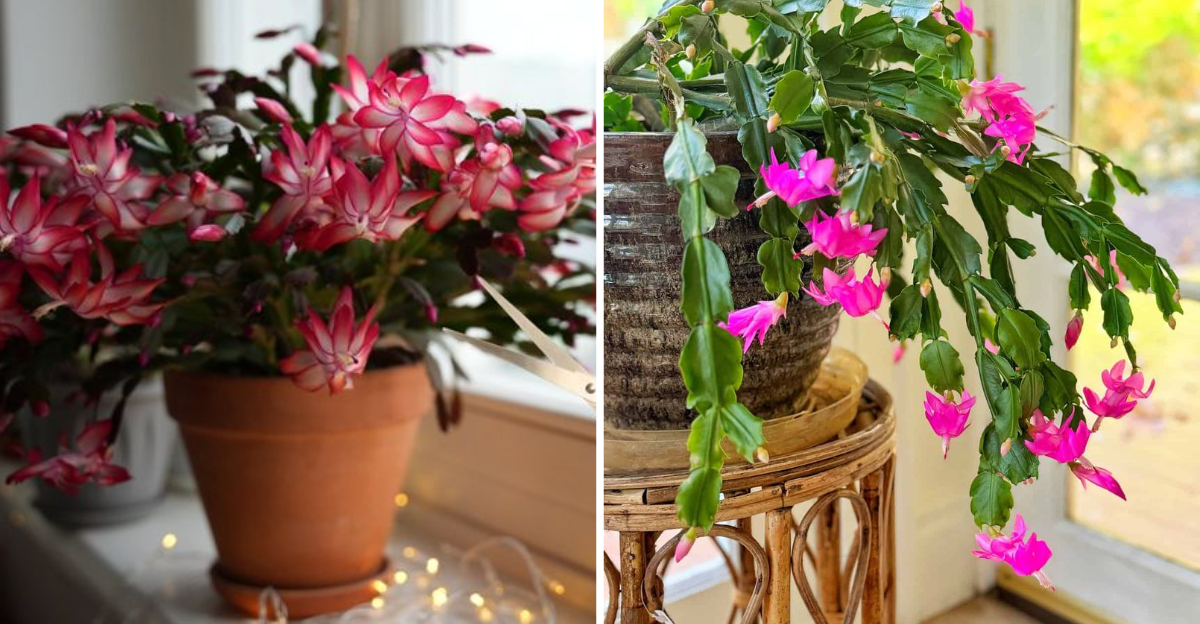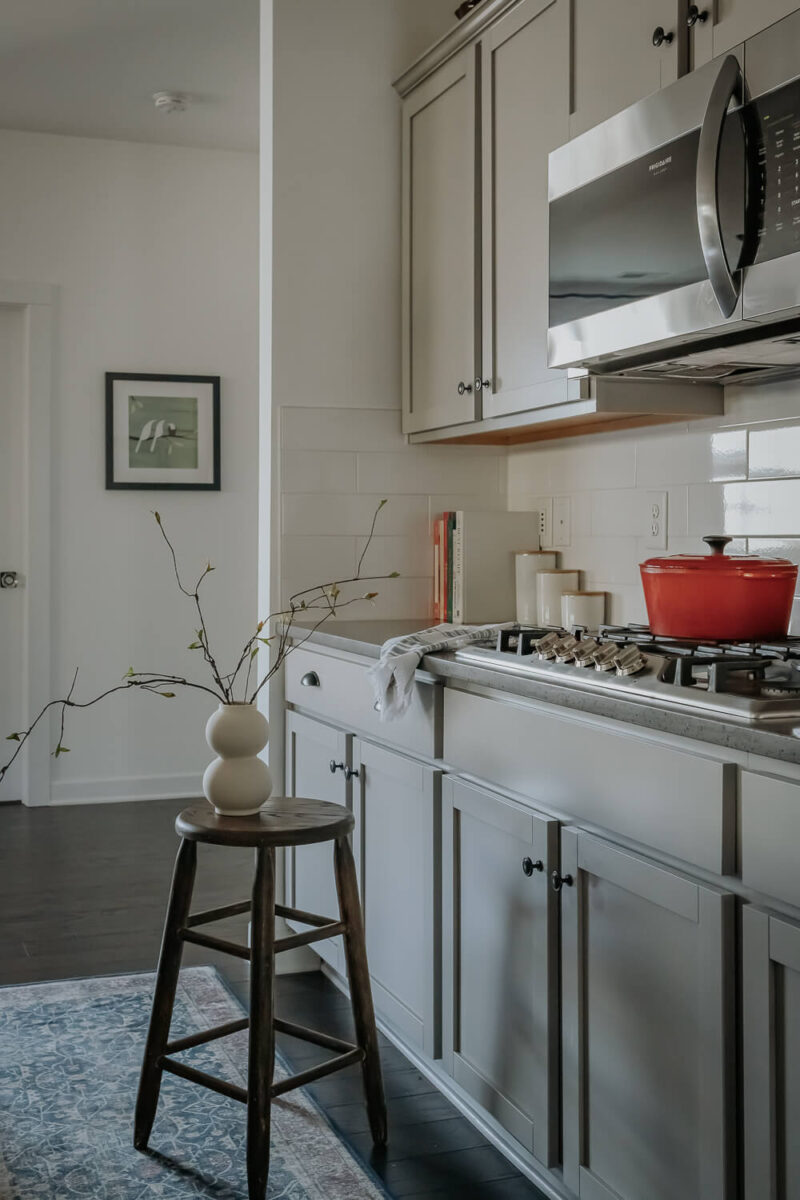Easy Christmas Cactus Tips That Guarantee Blooms Before Holiday Guests Arrive

Nothing brightens up your holiday home quite like a Christmas cactus bursting with colorful blooms just when your guests walk through the door.
Getting these beautiful plants to flower exactly when you want them can feel tricky, but I’m here to tell you it’s totally doable with the right approach.
With a few simple adjustments to light, temperature, and care routine, you’ll have your cactus showing off its gorgeous petals right on schedule. Let me share my favorite tried-and-true methods that’ll turn your plant into the star of your holiday decorations.
1. Give Your Plant Extended Darkness Every Night
Did you know your Christmas cactus actually needs plenty of darkness to trigger those beautiful blooms? It sounds backwards, but these plants are what we call short-day bloomers. They need about 12 to 14 hours of complete, uninterrupted darkness each night for six to eight weeks straight.
If you keep your plant in a room with evening lights or street lamps shining through, it won’t get the signal to start making flower buds. I’ve found the easiest trick is moving mine to a spare bedroom or closet each evening around dinnertime.
You could also cover it with a box or thick cloth. Just remember to uncover it each morning so it gets daylight too. Consistency matters here, so set a phone reminder if you need to.
2. Keep Night Temperatures Cool for Bud Formation
Cool nights are like a wake-up call for your Christmas cactus to start producing buds. When temperatures drop to between 50 and 55 degrees Fahrenheit at night, your plant thinks it’s time to bloom. During the day, aim for temperatures around 60 to 70 degrees.
I usually place mine near a window that gets a bit chilly at night but doesn’t have freezing drafts. If your home stays toasty all the time, try moving your plant to a cooler spot like an enclosed porch or basement.
The temperature shift between day and night is what really triggers bud development. Avoid placing your cactus near heating vents or radiators during this critical period.
3. Adjust Your Watering Schedule During Bud Setting
Watering gets a little trickier when you’re trying to encourage blooms. During the six to eight weeks when you’re giving your plant extended darkness, cut back slightly on water. Let the top inch of soil dry out completely between waterings.
This mild stress signals the plant that it’s time to focus energy on reproduction rather than just growing leaves. Once you see tiny buds forming, you can gradually return to your normal watering routine.
I check my plant’s soil with my finger every few days. When buds appear, I make sure to keep the soil evenly moist but never soggy. Proper watering balance prevents bud drop and keeps flowers healthy once they open.
4. Stop Fertilizing About a Month Before Blooming
Here’s something that surprised me when I first learned it: too much food can actually prevent your Christmas cactus from blooming. About four weeks before you want flowers, stop all fertilization completely. Excess nutrients, especially nitrogen, push the plant to make more leaves instead of buds.
I typically fertilize my cactus during spring and summer when it’s actively growing. Then I taper off in early fall and stop entirely by mid-October if I want December blooms.
Once your plant finishes flowering, you can resume a monthly feeding schedule with a balanced houseplant fertilizer diluted to half strength. This approach keeps your cactus healthy without overwhelming it during the critical bud-setting phase.
5. Provide Bright Indirect Light During Daytime Hours
While your cactus needs darkness at night, it absolutely loves bright indirect light during the day. I position mine near an east or west-facing window where it gets plenty of natural brightness without harsh direct sun rays. Direct sunlight can actually scorch the leaf segments and turn them reddish or yellowish.
If you only have south-facing windows, hang a sheer curtain to filter the intense light. North-facing windows work too, though your plant might not bloom quite as abundantly.
Good daytime light helps your cactus produce the energy it needs to create those spectacular flowers. Just remember to maintain that darkness period at night for the full effect.
6. Never Move Your Plant Once Buds Appear
When those precious buds finally start forming, resist every urge to move your plant around. Christmas cacti are surprisingly sensitive to changes once they’ve committed to blooming. Even rotating the pot or moving it to a different room can cause bud drop.
I learned this the hard way when I moved mine to show a friend and watched half the buds fall off the next day. The plant gets oriented to its light source and environment, and sudden changes stress it out.
If you need to water, carefully lift the pot without turning it. Keep foot traffic and temperature fluctuations minimal around your plant. Patience during this stage rewards you with a full display of flowers.
7. Maintain Proper Humidity Levels Around Your Cactus
Although it’s called a cactus, this plant actually comes from Brazilian rainforests and loves humidity. Aim for humidity levels between 50 and 60 percent for the happiest, healthiest blooms. Most homes drop below this during winter when heating systems dry out the air.
I use a simple humidity tray filled with pebbles and water placed under my plant’s pot. As the water evaporates, it creates a moist microclimate around the leaves.
You could also group several plants together or use a small humidifier nearby. Misting works in a pinch, but it’s temporary. Proper humidity prevents bud drop and keeps those gorgeous flowers looking fresh longer once they open.
8. Use Well-Draining Soil to Prevent Root Problems
Root health directly impacts your plant’s ability to bloom, and soggy soil is the fastest way to kill those roots. Christmas cacti need a light, airy potting mix that drains quickly. I use a blend made for cacti and succulents, or I mix regular potting soil with perlite and orchid bark.
The goal is soil that holds some moisture but never stays waterlogged. When you water, excess should drain through within seconds.
If your plant sits in dense, heavy soil, it’s worth repotting even mid-season. Healthy roots mean better nutrient uptake and more energy for flower production. Make sure your pot has drainage holes too, because standing water is a death sentence for these plants.
9. Prune Your Plant After the Blooming Period Ends
Once all the flowers have faded and dropped, it’s the perfect time to give your cactus a trim. Pruning encourages branching, which means more stem segments and ultimately more spots for flowers next year. I simply twist off one or two segments from the ends of each stem.
It sounds harsh, but the plant responds by growing bushier and fuller. You can even root these cuttings in soil to create new plants for gifts.
Avoid pruning in fall or early winter when the plant should be setting buds. Late spring or early summer is ideal timing. A well-pruned Christmas cactus develops a beautiful, full shape that produces an absolutely stunning flower display.
10. Repot When Your Plant Outgrows Its Container
If your Christmas cactus hasn’t bloomed in years, it might be root-bound and desperately needing more space. When roots circle tightly around the pot’s interior or poke through drainage holes, it’s time for an upgrade. I repot mine every two to three years, usually right after the blooming season ends.
Choose a pot only one or two inches larger in diameter. These plants actually bloom better when slightly snug in their containers.
Use fresh, well-draining soil and gently loosen the root ball before placing it in the new pot. Repotting refreshes nutrients and gives roots room to grow, which translates to more vigorous blooming the following season.
11. Check Regularly for Common Pests and Treat Quickly
Pests like aphids, mealybugs, and spider mites can quietly drain your plant’s energy and prevent blooming entirely. I make it a habit to inspect my Christmas cactus every week or two, especially in the joints between stem segments where bugs love to hide. Look for tiny cotton-like masses, sticky residue, or discolored spots.
If you spot any invaders, act fast. I usually spray affected areas with diluted rubbing alcohol or insecticidal soap.
For severe infestations, you might need to isolate your plant and treat it multiple times. Healthy, pest-free plants put all their energy into producing those show-stopping blooms rather than fighting off attackers.
12. Avoid Overwatering to Keep Roots Healthy
Overwatering ranks as the number one killer of Christmas cacti, and it’ll definitely prevent blooming. These plants have sensitive roots that rot quickly in constantly wet soil. I’ve learned to wait until the top inch of soil feels completely dry before I even think about watering again.
When you do water, give the plant a thorough drink until water runs through the drainage holes, then let it drain completely.
Empty any water that collects in the saucer underneath. Yellow, mushy segments or a foul smell from the soil means you’ve overdone it. During the dormant period before blooming, less water is actually better and helps trigger bud formation.
13. Keep Conditions Stable and Avoid Sudden Changes
Consistency is absolutely key when you’re trying to get blooms on schedule. Sudden temperature swings, drafts from opening doors, or moving your plant between rooms can shock it into dropping buds. I choose one good spot with the right light and temperature conditions, then I leave my cactus there throughout the entire blooming period.
Avoid placing it near heating vents, air conditioners, or frequently opened exterior doors. Even small environmental changes can stress the plant.
If you maintain stable conditions from the time you start the darkness treatment until flowers fade, you’ll see dramatically better results. Your Christmas cactus will reward your consistency with a breathtaking display of blooms.






